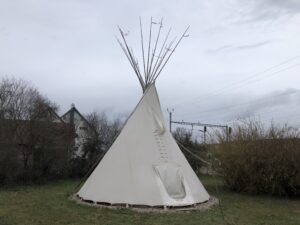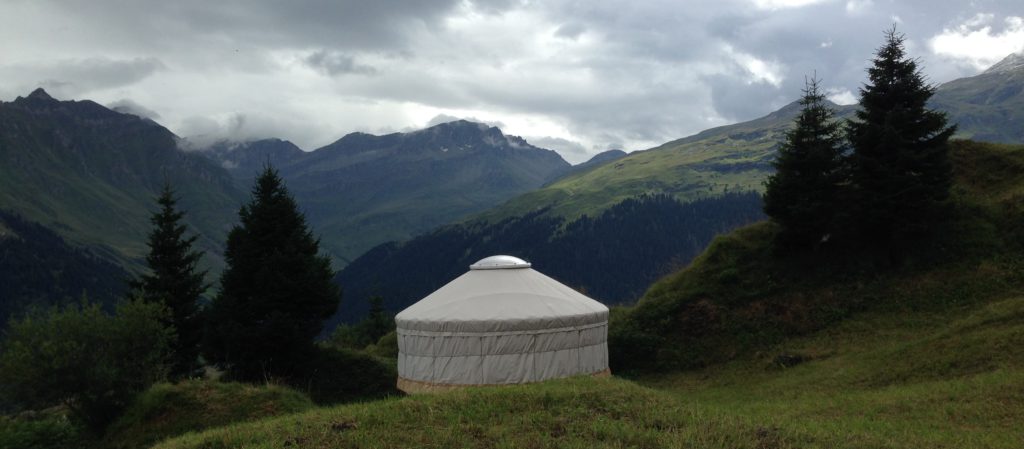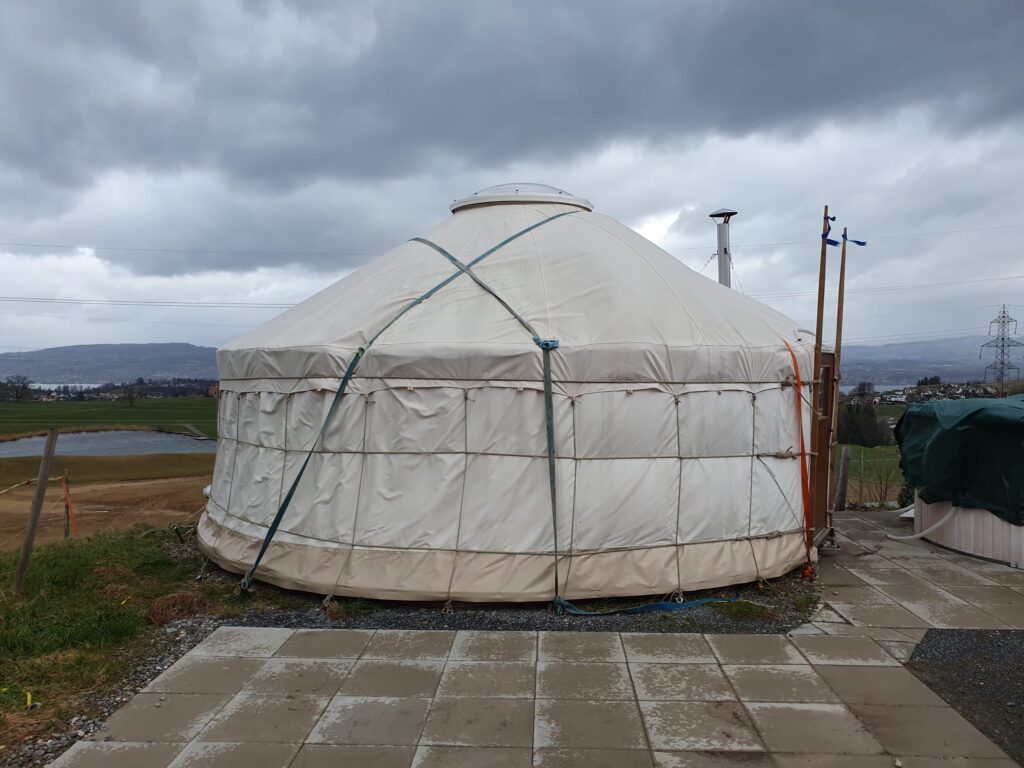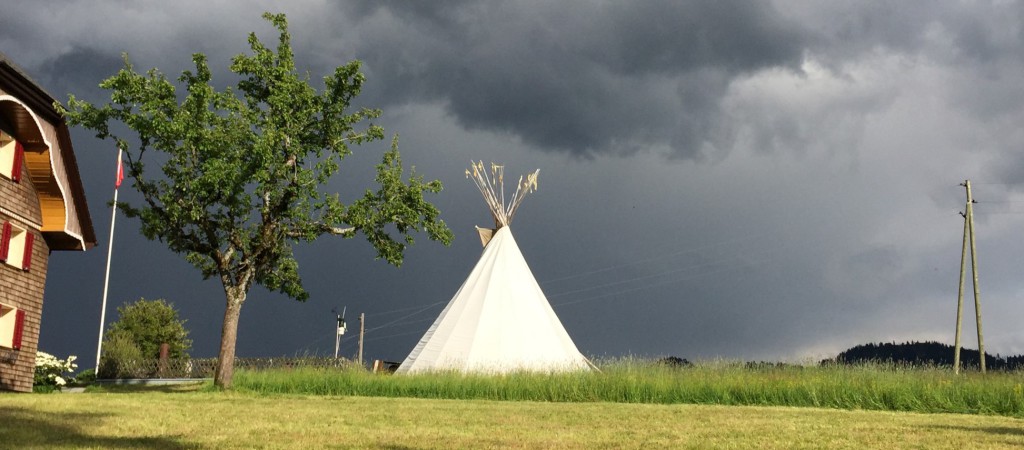How can I secure my teepee or the yurt in a storm?
The nature is always stronger, but there are measures that can be considered in a permanent use to better secure the tents.
What should be considered during a storm at a tepee?
The construction of the tipi is ideally suited to the conditions of an open prairie. But it is important to pay attention to how you align it and where the wind is blowing most from when setting up. In valleys or in the mountains, experience is required and the orientation must be adjusted depending on the existing circumstances. In the northern hemisphere, however, the weather mostly comes from the west and so the tipis are oriented towards the east with the entrance on the side facing away from the weather. There are seldom easterly winds and so the smoke is drawn out of the smoke flaps above. See also the tip Align smoke flaps.
Guard before the storm:
- Are the pegs still intact and firmly anchored?
- Are the smoke flaps assembled so that the tips touch at the top?
- Tie flaps on a pole in front of the teepee so that they do not tangle in the needles.
- Is the anchor rope tight?
- Is the anchor ring still stuck?
- Thread the door down so that it does not inflate.

Tour after the storm:
- Have herring dissolved?
- Is the anchor ring still firm?
- Have poles moved?
- Hang the door back.
What should be considered during a storm at a yurt?
 The yurt is designed for the open prairie, making it a relatively stable tent. Here it is simply important that in very exposed places there is a good anchorage in the natural soil. For larger yurts, it is also advisable to leave the abutment posts permanently in order to reinforce the bracing at any time if required. There are some safety measures that can be added to a yurt to increase stability.
The yurt is designed for the open prairie, making it a relatively stable tent. Here it is simply important that in very exposed places there is a good anchorage in the natural soil. For larger yurts, it is also advisable to leave the abutment posts permanently in order to reinforce the bracing at any time if required. There are some safety measures that can be added to a yurt to increase stability.
 Guard before the storm:
Guard before the storm:
- Bind 4 safety ropes in the four cardinal points of the crown on the crosses of the safety gates, so that the roof beams can not fall out of the socket.
- On the wind side, increase the number of side guy ropes as needed and anchor them to the natural ground.
- Install the supports and, diagonally across the roof, pull two ropes diagonally across the cross and anchor them firmly in the natural ground with large pegs. In case of strong storm warnings, temporary tension sets can also be used here.
- If the yurt is standing on a wooden floor, the scissors lattice below must necessarily be fixed inside and out with wood, so that the lattice grids can not move on the floor.
- The dome always has to be completely closed when the wind is blowing.
Tour after the storm:
- Have herring dissolved?
- Check the ropes of Dächli and maybe move something.
- Check the safety gate for cracks.
- Check that the roof beams are still in the crown and in the door frame.
For permanent installations, it is advisable to check with your insurance company in advance whether the natural tent is covered by natural hazard insurance. Most insurance policies cover damage from gusts of over 80-100 h/km. If there is already existing damage, we will provide an insurance quote upon request.

